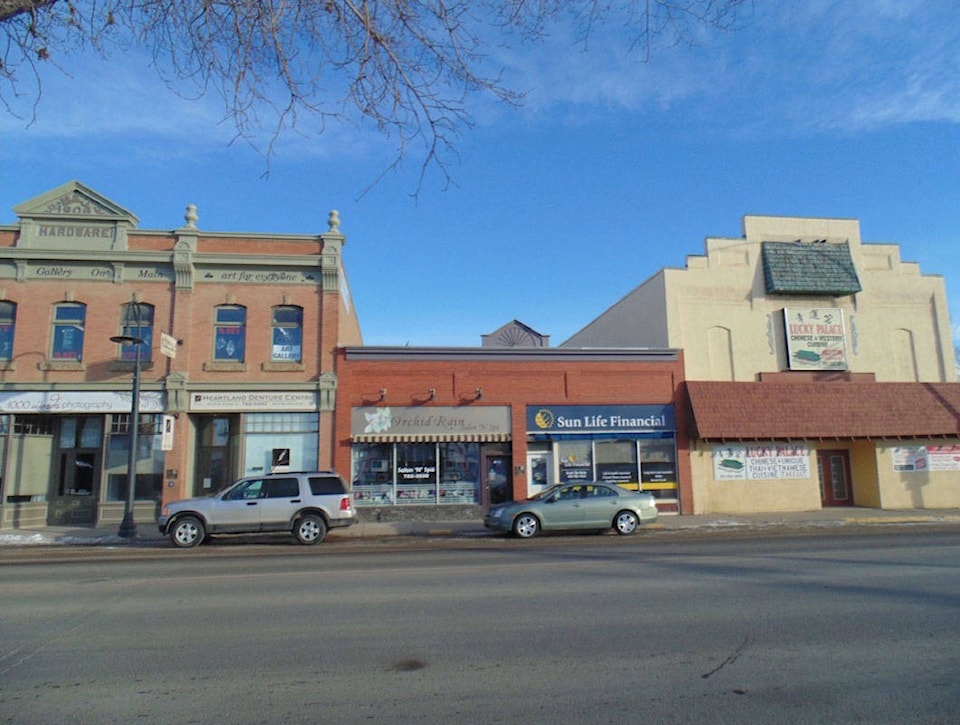A fascinating venture - launched this summer for Canada 150 - continues to chronicle the story of Lacombe through photos of the past all the way up to the present day.
The Lacombe Community Memory Project, which runs through to the end of the year, can be accessed via a direct link on the Lacombe Regional Tourism web site at www.lacombetourism.com.
“The Community Memory Project’s main purpose is to help engage our local community in documenting our community history as it is in 2017 for the purpose of preserving it for posterity, for future generations of Canadians,” said Marie Péron, executive director of the Lacombe & District Historical Society and the ED of Lacombe Regional Tourism as well.
“The idea is really to ‘map’ our community. We would like to see memories from throughout the community,” she added.
“Photos that we are looking for could be of buildings, places in the community, family gatherings, family pictures or community events. But the really important part - it’s more than just the pictures themselves - it’s the captions that we are really looking for as people share their memories of Lacombe with us.
“The way we’ve been structuring the story map is that you can actually go round and walk around the community and snap pictures with your phone and upload them directly to the story map,” she explained.
“Or, you can go through the photo collection that you’ve got in your computer at home or in your photo albums, scan those photos and upload them from your computer to our web site,” she said.
“So we are looking for a mix of photos that show people what Lacombe looks like now in 2017 but also those pictures from 10 and 20 years ago that really show the transformation of our community, and the things that are near and dear to the people that live here in Lacombe,” she said. Of course, photos from the far past are welcomed as well.
Peron said the Community Memory Project was kicked off in time for Canada Day and it continues through the remainder of the year as well. “We will wrap it up on December 31st. All of the memories that have been shared with us will then become part of the collection here at the museum, preserved for future generations of Canadians in the community archives. They may also be used for future exhibits or in materials produced by the Society. People can then look back on what Lacombe was like in 2017 and through the memories that were shared by residents at that time.”
For more, check out www.lacombetourism.com.
“There is a button right on our homepage that you can click on and it takes you directly to the story map,” she said. From there, folks can upload their photos and captions.
Another idea of capturing some local history is by taking a photo of a specific building back in the day and then today for comparison.
A wonderful example of that are the images of the Day Block which are shown here.
According to the Historical Society, the Day Block was built in 1903 and is the oldest masonry building in Lacombe.
“The Day Block was constructed for Alfred Herbert Day, a prominent businessman who arrived in the area in 1896. After marrying local widow, Caroline Marjorie Glass in 1900, Day constructed this building in close proximity to the railway station to house his general store.
“In 1904 Horne and Spice General Merchant’s Company moved in, followed by the W.E. Lord Company Department Store in 1908 and F.E. MacLeod’s Grocery and Ladies Wear business in 1910.”
According to the Society, the Day Block was once also an important social hub and community gathering place.
“Starting in 1907, Mr. Day operated Day’s Opera House on the second floor of the building, a hall which hosted a variety of events, including plays, concerts, and banquets.
“In 1907, Lacombe’s first moving picture was played here. Perhaps the most popular event at the Opera House was the annual Robbie Burns Night, complete with bagpipes, haggis, the ‘bonny knees’ contest and poetry readings. In 1905 people were said to come in sleighs in 40 below weather to hear William Puffer give his rendition of the works of Robbie Burns.”
Though now covered with stucco, the outline of brickwork can still be traced on the upper part of the façade.
The form and scale of the building have been preserved and the building is in its original location. Today the Day Block is home to the Lucky Palace, a local family-owned Chinese restaurant.
For Péron, the project has been particularly meaningful and enjoyable.
“I’ve enjoyed the discovery of photos that we just didn’t know were out there,” she said. “That’s particularly wonderful - to get some pictures from the time periods that we don’t really have in the archives here at the Museum.
“Our collection has a lot of the very early photographs by some of the first photographers in the community. So the collection that we primarily have is from the very early 1900s until about the 1930s and 1940s. Then when you start getting to the 1960s, 70s and 80s, there is a gap in our collection.
“So we are hoping that in terms of the older photographs that people might have in their personal photograph albums at home, they can help to fill in some of those gaps in our community’s history - some of the businesses that used to be here in Lacombe, and some of the places that people would go to gather and have celebrations.”
